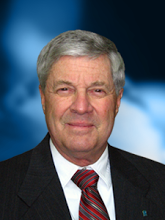Home » leadership
Articles Tagged with ''leadership''
Seven critical attributes of success
Leaders in diverse fields have these common skill sets
October 1, 2015
How people get into a “stuck state”
And here’s how to get them thinking – and creating ideas -- positively
July 23, 2014
Never miss the latest news and trends driving the safety industry
eNewsletter | Website | eMagazine
JOIN TODAYCopyright ©2024. All Rights Reserved BNP Media.
Design, CMS, Hosting & Web Development :: ePublishing










